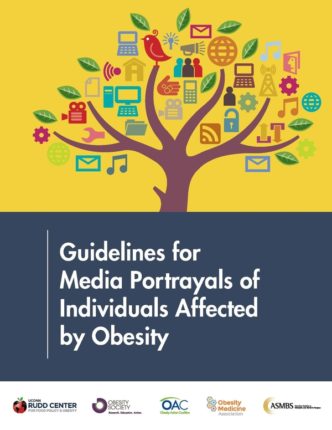 The media is an influential source and often takes part in shaping people’s perspectives and attitudes about obesity. From network news to daily newspapers, obesity has become a fixture of daily headlines throughout the United States. While these media stories raise awareness about obesity and its health impacts, there are times where media outlets paints obesity in a negative light. It is crucial that media outlets recognize the impact of stigmatizing obesity and do their best to present obesity as a serious, chronic, disease that affects the lives of many.
The media is an influential source and often takes part in shaping people’s perspectives and attitudes about obesity. From network news to daily newspapers, obesity has become a fixture of daily headlines throughout the United States. While these media stories raise awareness about obesity and its health impacts, there are times where media outlets paints obesity in a negative light. It is crucial that media outlets recognize the impact of stigmatizing obesity and do their best to present obesity as a serious, chronic, disease that affects the lives of many.
In an effort to educate media representatives on how to appropriately discuss the disease of obesity in the media, the Obesity Action Coalition (OAC), along with The Rudd Center for Food Policy and Obesity, The Obesity Society (TOS), the Obesity Medicine Association (OMA), and the American Society for Metabolic and Bariatric Surgery (ASMBS) have developed the Guidelines for Media Portrayals of Individuals Affected by Obesity.
The guidelines focus on areas of journalistic reporting such as:
- Respect Diversity and Avoid Stereotypes
- Use Appropriate Language and Terminology
- Conduct Balanced and Accurate Coverage of Obesity
- Select Appropriate Picture and Images of Individuals Affected by Obesity
Obesity should be treated like any other disease in the media. It is the hope of the OAC, The Rudd Center and TOS, that the media will adhere to these guidelines when covering the topic of obesity and those affected by it.
To view the Guidelines for Media Portrayals of Individuals Affected by Obesity, please click here.
Visit the OAC Image Gallery Today!
The OAC is excited to offer the public FREE access to more than 500 bias-free images for non-commercial use. The purpose of this gallery is to help refocus the perception of obesity, and change the perception of individuals affected by this chronic disease.
